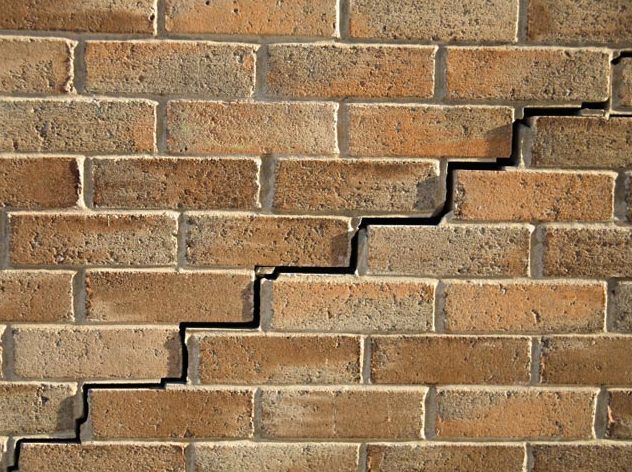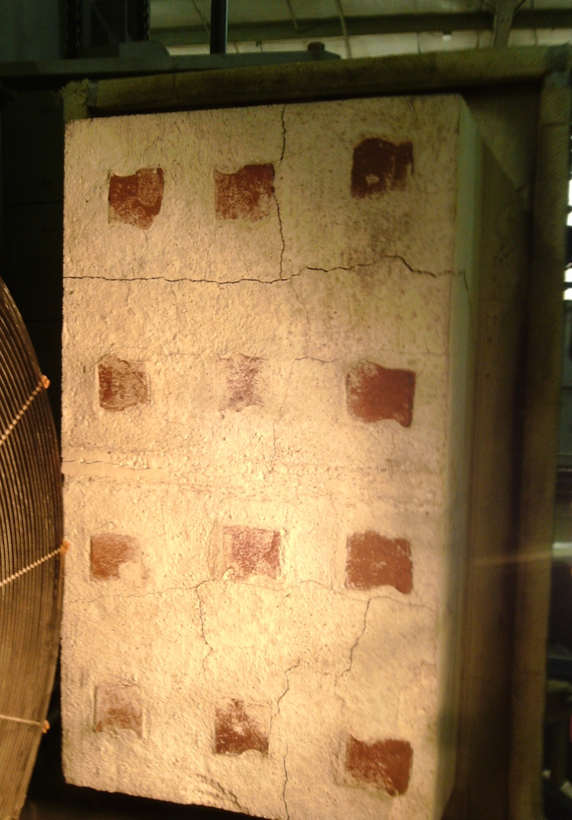There’s a Crack in My Refractory
If your refractory is cracked, is it failing?
Cracks certainly don’t look good. And they don’t instill confidence. But the reality is that most cracks are not necessarily bad, detrimental or indicative of failure.
A casual look at a street, sidewalk or your garage floor makes the point.

Monolithic refractories will crack for a variety of reasons:
- Heating stresses
- Volume changes
- Expansion
- Substrate
- Vessel geometry
- Installation technique
Again, cracks from these reasons do not mean the refractory has failed. Generally speaking, most of the cracks we see in refractories are more of an aesthetic nature and not function.
Here’s an example of a cracked refractory that is in good shape.
Most cracks are not something to be afraid of. For example, with a brick installation, each brick is surrounded by a crack to relieve local stress. We don’t call it a crack; we call it a mortar joint.
If you look closely at a refractory brick installation, you will likely see that some of the mortar joints have much larger cracks than others. These are stress areas where, if the installation was a monolithic, we’d see cracks in those regions as well, but they look more intimidating in monolithics because it’s not always expected.
Monolithics and Crack Prevention
Often times, operational factors influence and affect cracks. Monolithic refractory goes through several chemical phases from installation to in-service.
If a furnace has cracks due to thermal expansion stresses and we could map out all the stress, then all thermal stress cracking could be planned for, engineered and controlled by adding joints/seams or planned sections.
Not all refractory cracking is due to expansion or mechanical stress. There are phase changes as we heat up a furnace. The binding systems manufacturers rely on at ambient temperatures are destroyed and new high temperature bonding is re-created.

Additionally, the aggregates can see phase changes or sintering (glass formation at the surface). The binder is usually the most active component when we heat a refractory. For example, when we add water to a calcium aluminate cement castable (our most common binder), the casting water reacts with the cement, forms hydrates and leaves some ‘free’ water. Then we start heating and we remove the free water and eventually break down the hydrates. Once the hydrates are gone we rely on silica gels, glass and sintering. Ceramic bonding eventually is what bonds our refractory aggregates. Each one of these phase changes is accompanied by a density change, which creates internal stress and CAN lead to cracking. Thus time and temperature play an important part.
“Bad” Cracks That Require Attention
The types of cracks that should be fixed immediately are larger cracks, typically greater than 3/8 of an inch (and anything you can stick your hand into). If the crack can cause the refractory to loosen or fall out, then heavy cycling can cause cracks to propagate as the slags/product get into the cracks and make them worse (ex: the crack contracts when cool, debris trickles into crack then on heat up the crack cannot fully close).
In that case operation, not installation, has more effect on the crack.

If you’re not sure, send us a photo and we’ll analyze it for you.
Comments are closed.


